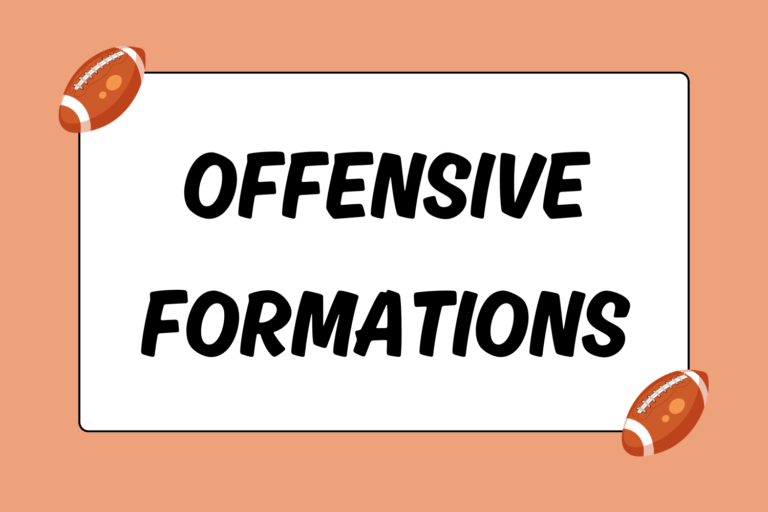The game of football has often been compared to a battle, mostly because of the highly physical nature of the game. However, despite the combative activities inherent in actually playing the game, another element exists that also serves as a parallel between battle and football: strategy, specifically the intent to gather intelligence about your opponent. Just as a military General will build a battle plan before heading off to fight the opposing forces, so too do football coaches research the other team before a game. This guide focuses on breaking down game film in order to gain an insight into the strategy of opposing teams.
What Does ‘Breaking Down Game Film’ Mean?
There’s a lot of information that can be found from watching one game’s worth of footage. The trouble is that it’s especially difficult to find all that information in one viewing. Because of this, coaches will routinely watch the same film several times, each time concentrating on gaining information about one or a few specific tendencies.
Also, it’s important to understand that there is no one correct way to break down game film. Different coaches have different methods of breaking film down; in the end, the goal is to gain information about the other team. The way coaches choose to do that is relatively unimportant — as long as they get the information they’re after.
Mental Edge
Some tips for effectively breaking down game film:
- Develop a system beforehand: Know what you’re looking for, before you actually look for it.
- Take notes: It’s far too difficult to try and remember everything important while watching film.
- Use your staff (if you have one): Breaking down film is much easier with several people involved. For example, have one person keeping statistical information (position, yards, time, etc.), one person charting the offensive and defensive formations, someone else keeping track of the type of play being run, and so on.
Gathering the Data
Understanding that there is a large amount of information to be found in game footage, it’s important to have a structure in place that helps to focus on a specific set of statistics. Focusing on the other team as a whole unit can provide valuable insight on their overall strategy, both offensively and defensively. However, teams usually have a handful of standout players that deserve a bit of attention as well. Below are just a few examples of things that coaches look for when breaking down film.
General Characteristics
Every team has a go-to offensive and defensive formation; in fact, some teams only use one formation on each side of the ball. Studying the formation(s) of the other team is a great way to anticipate the kinds of strategy the other coach has in mind, as well as recognize certain elements within your own scheme that could be changed to take advantage of the other team’s tendencies. Here are some questions you should try to answer:
- What offensive and defensive formations are used the most?
- What’s the run-to-pass play ratio?
- What’s the defensive tempo like? Very aggressive with lots of blitzing, or is it more a ‘read-and-react’ style?
- Is any play repeatedly used on offense?
- What side of the field do they prefer on run plays? On pass plays?
Once these kinds of questions have been answered, it’s easier to determine what sort of specific information needs to be sought out.
Reactionary Tendencies
As useful as it is to have a plan, the ability to quickly change that plan is just as valuable. Many times over the course of a game, coaches will call for a play or formation that turns out to be a poor choice. At such moments, the coach can either call a time-out or, if he’s prepared for such moments, trust that his players know what to do. Here are some examples of reactionary tendencies that are especially important to analyze:
- How do the players handle multiple receivers? Is it mostly man coverage, or zone?
- How often does the other team blitz? In what situations is a blitz most likely to occur?
- What does the quarterback do when he sees a blitz coming?
- When does the quarterback call an audible?
- What’s the go-to third down play? What about third-and-short? Third-and-long?
- At what distance will a field goal be attempted?
It’s important to analyze how opposing teams handle themselves in these kinds of situations, both to recognize what will happen ahead of time and because doing so makes it easier to determine if such habits can be exploited.
Standout Players
On an even deeper level of scrutiny, sometimes it’s necessary to analyze the tendencies of a single player. Perhaps it’s the 6-foot, 4-inch, 300-pound defensive tackle, or the star running back gaining 150 yards per game. Most teams have a handful of especially talented players, but occasionally one or two players become the central component of a team’s offensive or defensive strategy. In these instances, such players should be recognized as a component worthy of analysis. It’s also important to analyze them in different ways depending on the specific position they play.
Of course, there’s an inherent risk in putting too much effort tailoring your team’s strategy because of one player. For example, say you’re facing a team whose quarterback has a tremendously strong arm:
- If you pull more players back into pass coverage to compensate for the quarterback’s passing ability, it automatically reduces your ability to defend against the run.
- Likewise, if you choose to send more players in deep coverage, the other team could simply throw more short and mid-range passes to compensate for it.
Unfortunately, in such situations, there’s no one correct way to go. The best way to handle changing your strategy because of one player is by making subtle changes to a few areas.
The Best Way to Prepare?
Gathering information on an opponent is an excellent way to prepare for the coming battle. That said, it’s just as important to analyze your own team’s performance in past games; if you only spend time and effort trying to figure out the other team’s strategy, there won’t be any time to help your own team improve. Everything listed above can also be used to help you understand your own team’s strengths and weaknesses throughout the season. The key is to develop a sound strategy that’s capable of being changed, instead creating brand new strategies every week.





